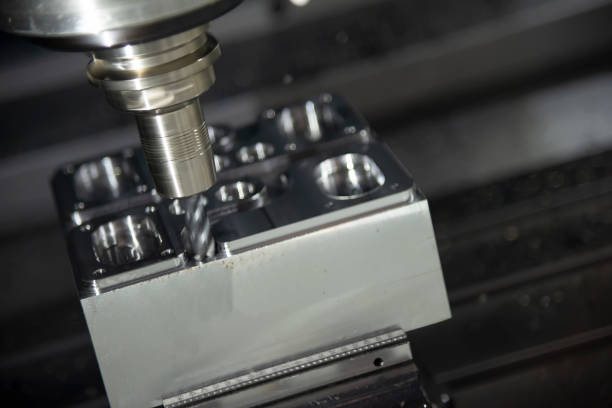The spindle nose refers to the shortest surface from the worktable plane without tool installation. This distance reminds users of its Z-stroke, that is, the processing range of the workpiece. The design and selection of the spindle nose have an important impact on the performance and processing efficiency of the machine tool.
Short nose spindles and long nose spindles have their own advantages and disadvantages in CNC machine tools and are suitable for different processing needs.

Good rigidity: Due to the short distance, the short nose spindle can improve the rigidity of the spindle, which can usually increase the rigidity by about 10%.
Suitable for heavy cutting: The short nose spindle can reduce vibration during heavy cutting and is suitable for high-intensity processing.
Good cooling effect: The short nose spindle is usually equipped with a ring spray design, which effectively improves the cooling effect of the spindle, so that the spindle can still maintain low temperature and high precision when running at high speed.
Protective device: The short nose spindle is usually equipped with a maze device and a maze blowing device to effectively protect the spindle.
Not suitable for concave parts processing: Due to the short distance, the short nose spindle is not suitable for concave parts processing.
Suitable for curved workpieces and boring long and thin holes: Due to the long extension, the long nose spindle is easier to process the concave position of the workpiece, which is more suitable for curved workpieces and boring long and thin holes.
Wide range of application: The long nose spindle is suitable for deep and shallow cavity processing and has high flexibility.
Poor rigidity: Due to the long extension, the rigidity of the long nose spindle is relatively poor, and it is not suitable for high-intensity heavy cutting.
Limited processing space: The design of the long nose spindle makes the processing space relatively small, which may affect the processing of some complex workpieces.
Processing requirements: If you need to process a workpiece with a deep cavity or a slender hole, the long nose spindle may be more suitable for this type of processing task due to its longer extension. On the contrary, if the workpiece is harder or requires higher rigidity, the short nose spindle can provide better rigidity due to its longer support part.
Rigidity: Short nose spindles usually provide better rigidity due to their longer support part, which is especially important when performing heavy cutting to reduce vibration.
Interference issues: Long nose spindles may be more prone to interference when machining concave surfaces or fine holes due to their longer extension, while short nose spindles may perform better in this regard due to their shorter extension.
Machine tool specifications: When selecting a spindle, you also need to consider the machine tool specifications and spindle compatibility to ensure that the selected spindle can adapt to the machine tool and meet the processing requirements.
Cost-effectiveness: The cost of different types of spindles may vary, and the budget and cost-effectiveness should be considered when selecting
Maintenance and replacement: There may be differences in the maintenance and replacement of long and short nose spindles, and these factors should be considered when selecting.
According to the specific processing task and machine tool conditions, make a comprehensive consideration of the above factors to make a choice. If there are specific machine tool models or processing task requirements, more detailed information can be provided to make more precise recommendations.